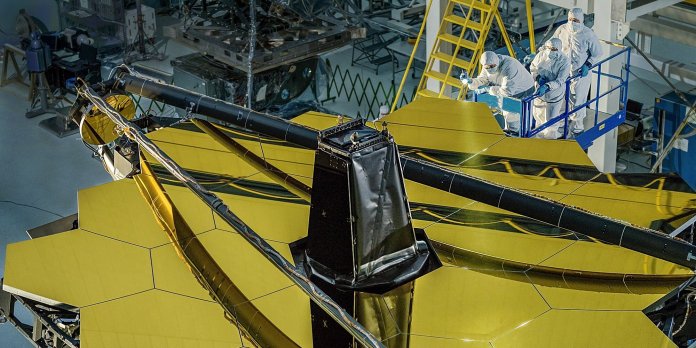
The much-anticipated launch of the James Webb Space Telescope will usher in a new era of research on our universe. Among the many researchers planning to take advantage of the data from the Hubble Space Telescope’s successor is Carnegie Mellon University Associate Professor of Physics Matthew Walker, who is principal investigator of a program making use of data collected in telescope’s first year of operation.
“The top-level science goal is to learn about the nature of dark matter,” Walker explained. This theoretical form of matter has never been directly detected but is estimated to comprise most of the matter in the universe. Various theories have arisen about the form dark matter takes, with the currently dominant cold dark matter theory predicting that it exists in clumps called halos with small basic units, as opposed to galaxy-sized agglomerations.
“One of the key predictions we’re trying to test of cold dark matter is the existence of these so-called sub-galactic dark matter halos,” Walker said. “That’s something people have been trying to test for decades.”
These lower-mass collections of dark matter don’t have stars in them, making them difficult to detect and observe. Two tests have been devised so far to seek out sub-galactic dark matter halos, Walker explained, but both have so far produced inconclusive results.
“Here, we’re introducing a new test,” Walker said. “We’re looking for perturbations from these sub-galactic dark matter halos on very fragile gravitational systems.”
The most fragile gravitational systems that can be observed are “wide” binary stars—pairs of stars orbiting each other but separated by more than 1,000 times the distance between the sun and Earth, making the gravitational forces between them very weak. Walker is particularly focused on looking for wide binary star systems, where two stars would be orbiting each other at distances more than 1,000 times the space between the Earth and the sun, making the gravitational forces between them very weak.
“That means if a sub-galactic dark matter halo zips through the neighborhood, its gravitational effects can be more than sufficient to destroy this wide binary system,” Walker said.
Walker and his team are setting out to examine the data from the James Webb Space Telescope and see if any wide binary star systems exist in dwarf galaxies, which are expected to be dense in dark matter. If they’re found, then their very existence would make the cold dark matter theory more unlikely.
“Nobody has been able to say one way or another whether wide binaries exist in the dwarf galaxies for lack of adequate instrumentation,” Walker said. “That is where the James Webb Space Telescope will open a new window.”
– Advertisement –